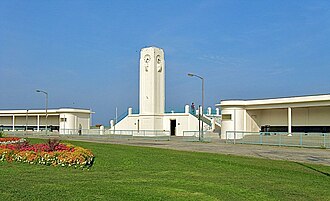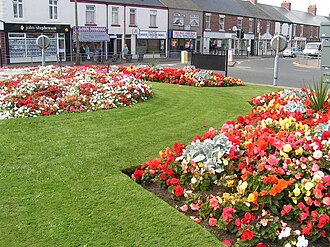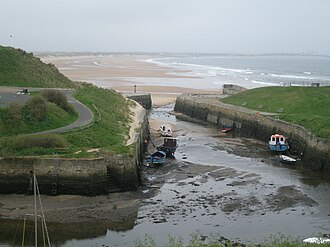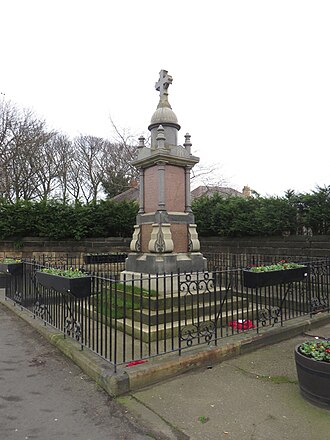Discover Your Roots
SIGN UPDiscover Your Roots
SIGN UPSeaton is a male name of English origin, meaning "Town By The Sea." It originated as a place name and surname, and is uncommon as a given name. Notable bearers include Seaton Schroeder, an admiral in the U.S. Navy, and Seaton Smith, a comedian, actor, writer, and director. The name Seaton is associated with several places, such as Seaton in various regions of England, Canada, Australia, Scotland, and the United States. Additionally, there are individuals with the surname Seaton who have made significant contributions in various fields, including sports, government, arts, and science. The name also has connections to railway stations, historic houses, and British titles.

Seaton Carew, located in County Durham, England, is a charming seaside resort with a rich history dating back to Roman times. The area flourished as a holiday destination for affluent Quaker families in the 18th and 19th centuries. Its picturesque seafront, stucco houses, and the Green, a turfed square facing the sea, were a magnet for visitors. The establishment of the Durham and Yorkshire Golf Club in 1874 further added to its allure. Seaton Carew's history is also marked by significant events such as the discovery of Spanish silver dollars in 1867 and the establishment of a zinc smelter in the early 20th century. During World War One, the area was home to an RFC/RAF airstrip. The 20th century saw the opening of an electric tramway track between Hartlepool and Seaton Carew, providing convenient transport for locals and visitors. Today, Seaton Carew continues to attract tourists with its beautiful coastline and historical landmarks, making it a delightful destination for travelers seeking a seaside retreat with a rich heritage.

Seaton Delaval is a village in Northumberland, England, known for its rich history and landmarks. The village is home to Seaton Delaval Hall, completed in 1727 by Sir John Vanbrugh, and taken into the care of the National Trust in 2009. The name 'Seaton Delaval' dates back to 1270 and reflects the village's proximity to the North Sea. The area was historically held by the Delaval family, who are still prominent landholders today. With a population of 4,371, Seaton Delaval is the largest of the five villages in Seaton Valley and offers a mix of housing developments, including post-war and 1970s houses, as well as more recent estates. The village has its own independent cooperative, offering various amenities, and is known for its local pubs and stores. Additionally, Seaton Delaval boasts a rich educational landscape, with several schools serving the community. The village has bus links to nearby towns and cities, and a new railway station was opened in 2024 as part of the Northumberland Line project, providing direct trains to Ashington and Newcastle.

Seaton Sluice, a village in Northumberland, lies on the coast at the mouth of the Seaton Burn, with a population of 2,956 in the 2021 census. The village's early history dates back to 1236 when it was called Hartley Pans, known for its salt-pans. The land belonged to Tynemouth Priory until it became the property of Hubert de Laval in 1100. The village's development was further shaped by Sir Ralph Delaval's harbor improvements, including the construction of sluice gates and a new entrance known as 'The Cut'. Seaton Sluice thrived as a harbor for exporting coal and salt until the decline of the coal trade and the imposition of a new salt tax in 1798. The village was also home to the Royal Hartley Bottleworks, which produced millions of bottles annually and played a significant role in the local economy until its closure in 1872. Despite the decline of its industrial activities, Seaton Sluice remains a historic village with a rich past, evident in the remnants of its bottleworks and harbor improvements.

Seaton House, located at 339 George Street in Toronto, Ontario, Canada, is the largest and one of the oldest homeless shelters in the city. Operated by the city government's Shelter, Support and Housing Administration, the facility offers temporary lodging, food, clothing, and medical care for single men, aiming to help them establish independence. It can accommodate up to 300 men, with additional capacity during extreme weather conditions. The original facility was established in 1931 during the Great Depression, and the current building opened in 1959. Seaton House provides various services including bathing facilities, delousing, counseling, and life skills training. It also operates satellite residences for specific demographics such as older men and those committed to abstaining from drugs and alcohol. The shelter's clientele has evolved over the years, catering to individuals with complex health, mental health, and substance use issues, as well as refugees and the disabled. Notably, the facility operates the Seaton House Annex Harm Reduction Program, offering managed alcohol services to homeless chronic alcoholics as a harm reduction measure. Seaton House continues to play a vital role in supporting vulnerable populations in Toronto.

Seaton Burn, located in North Tyneside, Tyne and Wear, is a charming village north of Newcastle upon Tyne. It is part of the broader Seaton Valley, situated on the border between Northumberland and North Tyneside. The village was once home to Seaton Burn Colliery, which operated from 1844 until its closure in 1965, subsequently making way for the NCB Brenkley Colliery. The area's historical significance is evident in the adapted modern buildings, incorporating remnants of the old colliery such as the "Fitting Shop" and "Blacksmiths Shop." Seaton Burn also boasts the old Seaton Burn Wagonway, now repurposed as a cycleway, contributing to North Tyneside's extensive cycle network. Notable individuals associated with Seaton Burn include professional footballer Jack Carr and English actor Robson Green, who was educated at North Gosforth Academy, previously known as Seaton Burn College. The village is also home to various sports clubs, including Seaton Burn Cricket Club and Seaton Burn Football Club.
All images displayed on this page are sourced from Wikipedia or Wikimedia Commons.We use these images under their respective Creative Commons or public domain licenses. Wherever applicable, author attributions and license information are provided. If you believe an image is used incorrectly or outside its license terms, please contact us so that we can review and correct the issue.